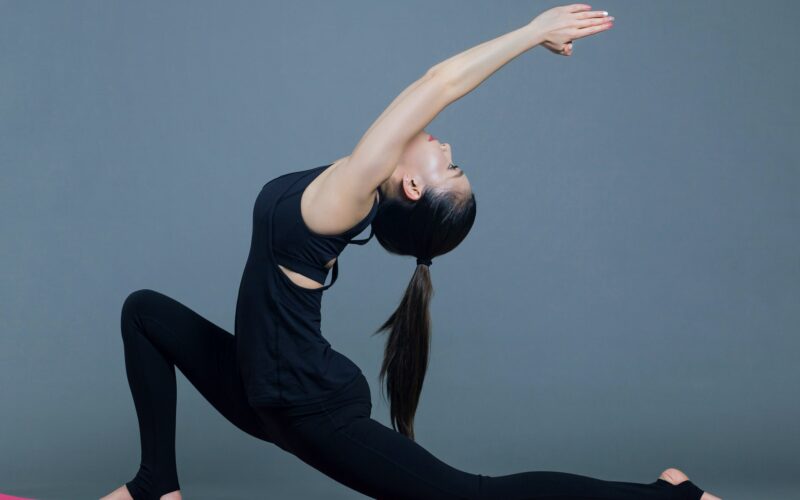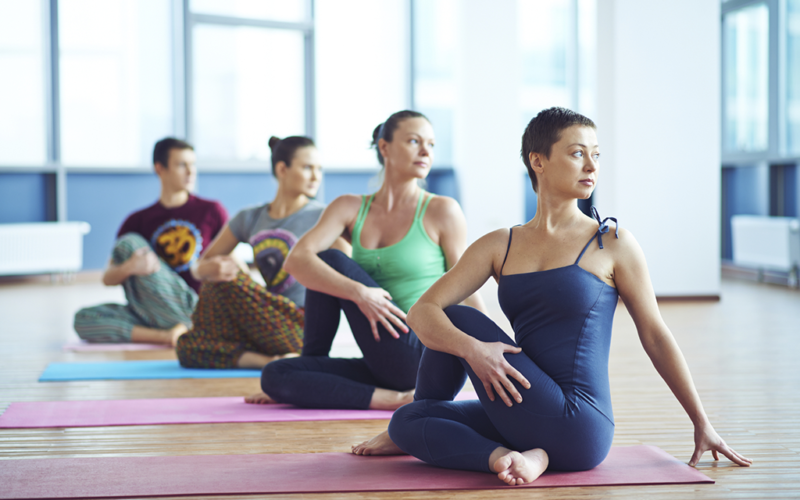The ‘sitting vs. standing at your job’ discussion has been ongoing for a while, and for a good reason.
It’s no secret that sitting at your desk for prolonged periods of time certainly isn’t doing any wonders in strengthening your back, posture, or muscles in general.
The longer you’ve been at a desk job, the greater the risk of your joints and muscles being weakened.
However, as the name suggests, a desk job means that sometimes those long hours of sitting are simply unavoidable, and any solutions that are offered sometimes end up being too pricey or just not suitable for the workplace.
Thankfully, one of the easier ways of combating the physical fatigue that comes with desk jobs has been growing more and more popular in recent years, and that is yoga.
It certainly doesn’t have to be a time-consuming activity, and using just a few simple techniques, you can even do yoga from your office chair in just 5 minutes.
To find out more about the physical benefits of yoga for your body, as well as the effect it can have on your productivity levels, keep reading below!
1. Reduces Back Pain
Perhaps one of the biggest complaints that office workers have as a result of a desk job is the back pain that comes with it.
It’s especially important to treat this because although you may not feel it at the desk, it’s especially noticeable during activities outside the office and can lead to serious injuries.
Some simple yoga exercises every hour or two at your desk can help relieve the pressure on your back, and that in turn will help you focus and get more work done.
2. Relieves Eye Strain
Another downside that comes with a desk job is the amount of time spent looking at a screen.
Chances are, your screen time increases even when you’re done with work because of the use of phones and watching TV in our downtime, putting pressure and strain on our eyes because they don’t use the full range of motion or muscles.
Although it’s difficult to reduce screen time at work, actively resting your eye muscles by gazing out of a window or relaxing them by warming up your hands and placing your palms over your eyes for just a few minutes can make a difference.

3. Reduces Stress
Whether you’ve got an influx of work or need to meet a tight deadline, it’s natural to feel stressed at work at some point or another.
Some may work well under pressure, but chances are when you’re stressed, your productivity levels drop as well, and the frustration stops you from working at your peak state.
Implementing even just a few minutes of mindful and conscious breathing has been proven to reduce stress and help improve your mental state, allowing you to return to your work in a reenergized and fresh state of mind.
4. Improves Posture
Related to back pain, one of the things most affected due to sitting for prolonged periods is your posture.
It may not be noticeable after a day or two, but gradually, you’ll begin to feel the effects of your bad posture, which can lead to not only back pain but other aches and joint pains as well.
Yoga exercises to strengthen your core and actively sitting up straight when you notice you are slouching are good ways to correct your posture.
5. Improves the Digestive System
For someone who doesn’t move very much at a desk job, aside from back and posture, the digestive system is one of the most affected areas of our body.
Because it’s not visible to us, we might not pay as much attention to it as we should.
A poorly functioning digestive system can affect other working areas of our body, such as the immune system, which of course, protects us from all sorts of diseases and nasty viruses.
Exercises such as the revolved chair pose at your desk can help engage the abdominal muscles and speed up the digestion process, helping it function as it should, despite the lack of movement.
6. Helps Stabilize Hormones
Aside from stress affecting your productivity, it can also cause an imbalance in your hormones which can sometimes lead to thyroid issues or the development of diabetes.
Stress itself is also caused by the production and release of cortisol into your bloodstream, so it’s understandable why it may offset other hormones in the long term, which are responsible for things like your immune system and metabolism.
Certain yoga poses can directly stimulate the endocrine system, increasing melatonin levels and improving blood flow.

7. Improve Hip Flexors
Another part of your body that is affected as a result of sitting for a long time is your hip flexor.
The muscles become shorter and lose the motion that they are capable of achieving.
Hip flexors are especially important because they bridge the upper and lower part of your body and keep your body aligned.
Try and incorporate some exercises to stretch your hips.
Something even as simple as sitting cross-legged on your chair for any amount of time will stretch your hip flexors and make sure they remain flexible.
Ivan Pertti
Latest posts by Ivan Pertti (see all)
- What To Know About The Nicotine Pouch Trend - August 25, 2022
- 7 Reasons Yoga is Good for People Who Work at Desk Jobs - August 25, 2022
- CoolSculpting for Non-Surgical Fat Removal - August 25, 2022





